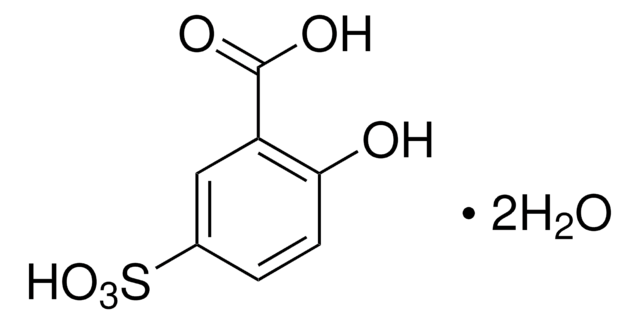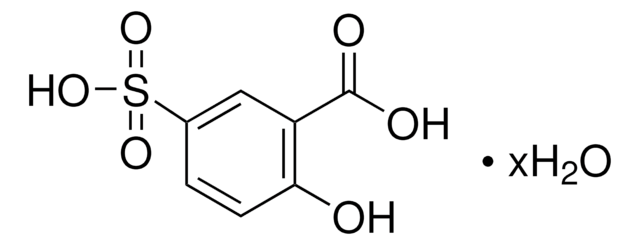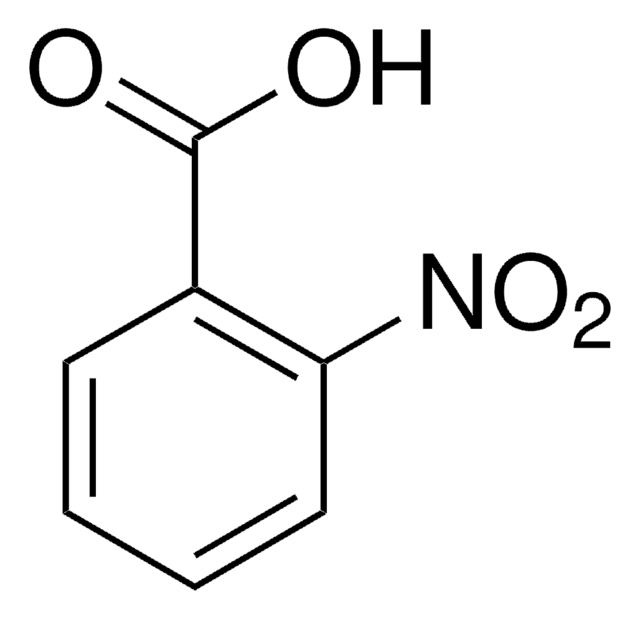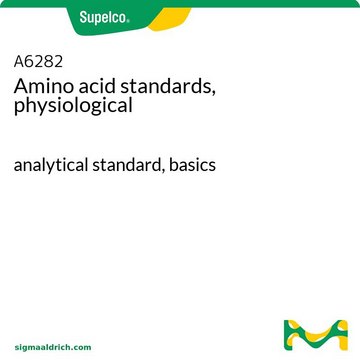S3147
5-Sulfosalicylic acid dihydrate
suitable for electrophoresis, ≥99%
Synonyme(s) :
2-Hydroxy-5-sulfobenzoic acid
About This Item
Produits recommandés
Pureté
≥99%
Forme
powder or crystals
Technique(s)
electrophoresis: suitable
Impuretés
≤0.02% Insoluble matter
≤0.05% Salicylic Acid
Pf
105-110 °C (lit.)
Solubilité
water: soluble 100 mg/mL, clear, colorless
Traces d'anions
chloride (Cl-): ≤0.001%
sulfate (SO42-): ≤0.035%
Traces de cations
Fe: ≤0.001%
heavy metals (as Pb): ≤0.002%
Chaîne SMILES
[H]O[H].[H]O[H].OC(=O)c1cc(ccc1O)S(O)(=O)=O
InChI
1S/C7H6O6S.2H2O/c8-6-2-1-4(14(11,12)13)3-5(6)7(9)10;;/h1-3,8H,(H,9,10)(H,11,12,13);2*1H2
Clé InChI
BHDKTFQBRFWJKR-UHFFFAOYSA-N
Vous recherchez des produits similaires ? Visite Guide de comparaison des produits
Description générale
Application
Remarque sur l'analyse
Mention d'avertissement
Danger
Mentions de danger
Classification des risques
Eye Dam. 1 - Skin Corr. 1B
Code de la classe de stockage
8A - Combustible corrosive hazardous materials
Classe de danger pour l'eau (WGK)
WGK 1
Point d'éclair (°F)
Not applicable
Point d'éclair (°C)
Not applicable
Équipement de protection individuelle
dust mask type N95 (US), Eyeshields, Gloves
Certificats d'analyse (COA)
Recherchez un Certificats d'analyse (COA) en saisissant le numéro de lot du produit. Les numéros de lot figurent sur l'étiquette du produit après les mots "Lot" ou "Batch".
Déjà en possession de ce produit ?
Retrouvez la documentation relative aux produits que vous avez récemment achetés dans la Bibliothèque de documents.
Les clients ont également consulté
Notre équipe de scientifiques dispose d'une expérience dans tous les secteurs de la recherche, notamment en sciences de la vie, science des matériaux, synthèse chimique, chromatographie, analyse et dans de nombreux autres domaines..
Contacter notre Service technique







